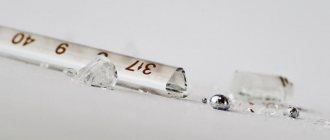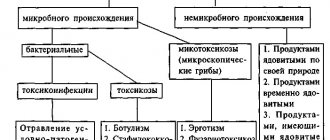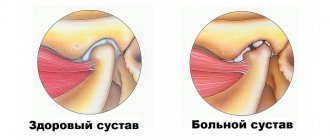Why is mercury poisoning dangerous? The greatest danger is posed by toxic mercury vapor. Mercury poisoning occurs when they are inhaled - the higher the concentration, the more serious the consequences. With minor damage, headache, nausea, vomiting, dizziness and weakness are possible, with more serious or chronic forms - damage to internal organs, even death.
Expert help
+7(812)309-13-43
Why is mercury dangerous?
According to the hazard class, mercury belongs to the first class, that is, it is considered an extremely dangerous chemical substance.
The penetration of mercury into the body most often occurs by inhaling its odorless vapors. Exposure to mercury, even in small quantities, can cause health problems and severe poisoning. Mercury has toxic effects on the nervous, digestive and immune systems, lungs, kidneys, skin and eyes.
Mercury poisoning is divided into mild (food poisoning), acute (after accidents at enterprises, due to safety violations) and chronic.
Chronic poisoning increases the risk of tuberculosis, atherosclerosis, and hypertension. Moreover, the consequences of mercury poisoning can appear several years after stopping contact with it.
Acute mercury poisoning can lead to death. Also, if poisoning is not treated, the functions of the central nervous system may be impaired, mental activity may be reduced, convulsions and exhaustion may appear. Acute stages of mercury poisoning cause loss of vision, complete paralysis, and baldness.
Mercury and its compounds are especially dangerous for pregnant women, as they pose a threat to the development of the child.
Article on the topic
What to do if you break a thermometer? Until the 1970s, mercury compounds were actively used in medicine, but due to its high toxicity, this metal was almost no longer used for the manufacture of medications.
Today, mercury compounds (merthiolate) are used
– as a preservative for vaccines; – for medical thermometers - one medical thermometer contains up to 2 g of mercury; – energy-saving gas-discharge fluorescent lamps contain up to tens of milligrams of mercury.
There is also mercury in fish and shellfish, so it is recommended to avoid seafood during pregnancy.
Please note that heat treatment of foods does not destroy the mercury they contain.
What diseases are caused by mercury vapor?
Poisoning with toxic compounds and mercury vapor leads to dangerous diseases:
- Lack of qualified medical care leads to depression of the nervous system and irreversible brain damage. Coordination and motor skills are impaired.
- The kidneys and liver, the organs that act as a filter, suffer, as well as the gastrointestinal tract.
- Long-term exposure to low concentrations of mercury vapor affects the likelihood of tuberculosis and other diseases of the respiratory system. The cardiovascular system is also at risk.
- The effect of mercury affects the psycho-emotional mood (mercury erethism). It is represented by nervous excitability and insomnia.
- Minamata disease is a syndrome that occurs when poisoned by organic compounds of a toxic metal. The compounds are mainly represented by methylmercury. The pathology depresses the central nervous system, causing headaches, loss of taste and smell, slurred speech and hearing loss. Bloody vomiting and cerebral palsy are observed. Particularly severe patients lost their minds and died within 30 days.
The harm that mercury causes depends on how it enters the body and the state of the toxic metal.
Mercury vapor harms the respiratory system; acute poisoning causes inflammation of the respiratory system. Inorganic compounds cause hypertrichosis, generalized rash and photosensitivity.
Such compounds are represented by mercury salts, and the average person will have a hard time encountering them.
Mercury poisoning
Chronic forms of mercury poisoning are called mercurialism, which occurs due to prolonged exposure to low doses of mercury vapor in humans. Mercurialism can cause not only physical, but also mental abnormalities.
Symptoms of poisoning. Acute mercury poisoning appears a couple of hours after the onset of poisoning. Symptoms of acute poisoning: weakness, headache, sore throat, metallic taste in the mouth, drooling, swollen and bleeding gums, nausea and vomiting. Often severe abdominal pain, diarrhea, chest pain, cough, severe chills appear, and body temperature rises to 38–40 °C.
Chronic mercury poisoning is indicated by fatigue, drowsiness, general weakness, headache, dizziness, apathy, and irritability.
What to do? At the first signs of mercury poisoning, it is important to call a doctor as soon as possible. Before the ambulance arrives, the victim needs to drink milk and then induce vomiting to remove the fluid.
Treatment methods for intoxication
In case of acute poisoning and chronic intoxication with mercury and its vapors, the patient is administered calcium gluconate, vitamins B6, B1. A solution of ascorbic acid and glucose is infused by infusion. In severe cases, taurine, succimer, unithiol or their analogs are used.
The main goal of these activities is to remove mercury from the human body. In addition to drug treatment, gastric lavage using a tube is used.
During the treatment process, the patient receives antiallergic medications and drugs that strengthen the victim’s immune system.
Inpatient treatment for mercury poisoning
When a poisoned person is admitted to a medical facility, he is diagnosed and suitable treatment and a set of procedures are selected, which are aimed at restoring all body functions and alleviating symptoms.
- An antidote is introduced.
- Repeated gastric lavage is allowed.
- The water-salt balance is corrected.
- Hemodialysis is used.
- In case of severe pain, a spinal cord block is performed.
- The patient is given diuretics.
- If the patient's condition worsens, the patient is transferred to intensive care.
- At the end, probiotics are introduced to restore the intestinal microflora.
Folk remedies
Traditional medicine recommends eating undercooked rice and red beets in case of mercury poisoning.
It is forbidden to eat spicy and salty foods, it is necessary to limit the consumption of fats.
Apple juice, which contains pectin, will help remove toxins. It is recommended to drink dairy products, a decoction of chamomile and alfalfa.
How to get rid of mercury indoors
| Reference | |
| Previously, it was recommended to collect mercury balls with a medical bulb (syringe) in a glass jar with an airtight lid, and fill the cracks and irregularities with sulfur powder (S). But this method was found to be ineffective, since sulfur and mercury easily react only with thorough grinding in a mortar. | |
Mercury disposal is carried out by special services, including those that are part of the Russian Ministry of Emergency Situations. As a rule, they do not respond to a domestic call if you have broken a thermometer. You can get rid of a small amount of mercury yourself.
First, you need to remove children and pets from the room and open a window to provide fresh air.
Before cleaning up mercury, you should protect yourself as much as possible - put on a respirator or gauze bandage, rubber gloves.
The thermometer fragments can be placed in a thick plastic bag and tied tightly. It is better to place the mercury itself in an airtight container, for example, in a jar of cold water. You can use a paper envelope or paper towel during collection. Before you start collecting mercury, illuminate the space with a lamp - under the rays of light, the mercury balls will be noticeable, as they will begin to shine.
You can collect mercury using:
– brushes made of amalgamating metals; – pieces of wire, they will help collect mercury in the cracks; – adhesive tape – suitable for collecting small balls; – pipettes with a thin spout.
Place the collected mercury and used items in a pre-prepared sealed container.
| Adviсe | |
| After collecting it, it is advisable not to enter the room where the mercury was collected for 24 hours . After collecting mercury, to reduce the effect of toxins on the body: – rinse your mouth with a weak solution of potassium permanganate; – take 2-3 tablets of activated carbon. | |
The room needs to be treated with chemicals. The simplest composition for treating a room is an alcohol solution of 5% iodine. You can also fill the place where the mercury was with a solution of potassium permanganate. The floor must be thoroughly washed the next day.
You should not throw mercury down a garbage disposal or sewer. After collecting mercury, call your local emergency services; they are required to accept it for disposal.
It is strictly forbidden to:
Sweep away the mercury with a broom. The rods break the mercury ball into smaller ones, making them more difficult to collect.
Collect mercury with a vacuum cleaner, as during operation it heats up and evaporation of mercury increases. In addition, mercury will settle inside the vacuum cleaner, and you will have to throw it away.
Wash clothes in which you have removed mercury, as this may contaminate the washing machine with harmful metal. All things that have come into contact with mercury must be thrown away.
Prevention
Preventive measures are based on minimizing the risk of mercury entering the body in the form of vapors or compounds.
To do this, you need to know the dangers of a broken thermometer and fluorescent lamp, as well as how to quickly and safely neutralize mercury from a damaged product. The need to store the thermometer in a protective case is one of the main methods of prevention.
People working with mercury are required to undergo regular medical examinations. If a person was in a room with a broken thermometer, a medical examination is also recommended.
Causes
Sources of mercury can include household items, medical supplies and the environment. Today, mercury can be found in household items such as:
- mercury thermometer (contains 2 g of mercury);
- fluorescent gas-discharge lamps;
- mercury-zinc batteries;
- pigments.
On an industrial scale, mercury pumps, pressure gauges, thermometers, electrical switches, relays, and mercury rectifiers were used, the replacement of which with mercury-free ones is a priority today. In modern times, the technological processes of almalgamation and gilding are abandoned.
In medicine, mercury can be contained in vaccines and pharmacological preparations, which contain preservatives based on the antiseptic and antifungal compound - thiomersal . In addition, amalgam can also be used in dental fillings, but in the territories of the former CIS their production has practically ceased.
Despite the fact that the content of mercury in nature is insignificant, with the exception of certain provinces, the danger of poisoning is low, but due to toxic mobility, volcanic activity (provides up to 50% of atmospheric mercury emissions) and geological geochemical processes in the earth's crust, the development of micromercurialism is possible. Human activities do not pose enormous risks of mercury contamination. However, there are known cases of mass poisoning associated with environmental pollution. These include systematic pollution by wastewater from a chemical plant in Japan, Minamata in 1956, pollution of water resources by wastewater in Canada, Ontario in 1970, as well as the use of treated grain with methylmercury, which led to mass poisoning in Iraq in 1971.
How to properly dispose of it?
The collected mercury should be placed in a tightly closed container or folded into a tight bag and tied. The securely packaged substance must be handed over to the local demercurization center or management company. You can find out where waste is accepted by calling 112. The Ministry of Emergency Situations will accept thermometers and everything else for free, but commercial companies will have to pay. The tools used for cleaning should also be disposed of.
“In each constituent entity of Russia, the issue of mercury delivery is resolved specifically in relation to the region. This metal must be handed over to specialized enterprises. Under no circumstances should waste be thrown into garbage containers, even those intended for mercury-containing waste,” noted Andrei Mikhalchenkov.
Special units of the Ministry of Emergency Situations, as well as private companies, deal with broken mercury thermometers. It is easy to find on the Internet those who provide such services, but their quality is difficult to verify. For this reason, it is better to call rescuers.
“It’s worth calling 112, and the dispatcher in your region will direct you to where you can hand over this dangerous item. You can also give it to federal or local rescuers, but it’s better to call the general number and get the address where it’s best to donate it,” advises Sergei Shchetinin, Honored Rescuer of the Russian Federation.
What to do if the thermometer breaks
A broken mercury thermometer is not such a rare incident, especially in families with small children. In this case, there is no need to panic - the liquid metal contained in a home appliance (usually about two grams) is not enough to cause serious harm to the body. However, urgent action should be taken. Mercury vapor, which serves as a temperature meter in a thermometer, is dangerous to human health. If it is not possible to do demercurization on your own (for example, the substance was spilled on the battery and instantly evaporated), you must call “112” or “01”. And then act according to the instructions of the duty officer.
What to do if you have mercury poisoning
There are clear algorithms for providing first aid and treating victims of intoxication with mercury and its compounds. They differ depending on how the toxic substance entered the body.
First aid
If the victim has inhaled mercury, he should be removed from the affected area. It is important to provide the patient with a constant supply of fresh air. Then lay or sit down, ensure peace and call an ambulance.
If accidental ingestion of a ball of heavy metal or its salts occurs, the contents of the stomach should be evacuated.
Method of flushing the gastrointestinal tract system:
- grind activated carbon at the rate of 1 g per 1 kg of body weight;
- mix with 2 liters of water;
- stir until a homogeneous suspension is formed;
- give the victim something to drink;
- press on the root of the tongue and induce vomiting.
After washing the stomach, give the victim milk or protein water - beat 2 egg whites with 1 liter of water - and take him to a medical facility.
Treatment
Treatment of victims of contact with mercury vapors or compounds is a long and complex process. The decay and half-life of toxic metal metabolites ranges from 42 to 75 days.
Important! In case of chronic and acute intoxication, treatment is carried out only at a medical institution. If the patient's condition improves after long-term micromercurization, the patient is transferred to outpatient observation after 3 weeks.
An acute process requires a longer period of stay in a medical institution. The course of therapy is determined individually for each patient.
Drug therapy involves the use of antidotes:
- Unithiol – the use of a 5% solution at the rate of 50 mg per 10 kg of weight intravenously is indicated.
- first day – 3–4 infusions;
- second - 2-3 infusions;
- on days 3–7 – 1–2 infusions.
In case of inhalation damage, the administration of unithiol using inhalation devices and nebulizers is effective. The duration of the course is at least 10 days. After some time it is repeated.
- Calcium-disodium salt EDTA - for outpatient therapy - 0.5 g 3 times a day for the first 4 days, then the dosage is reduced.
- Strizhevsky's antidote - for oral administration of a toxic metal and its compounds. This is an alkaline solution containing hydrogen sulfide in an amount of 0.5%. Just 100 g of antidote neutralizes 4 g of mercury.
- Colon lavage with activated carbon.
- General restoratives, vitamin complexes, antiallergic drugs.
What not to do
According to experts, when collecting mercury spilled from a broken thermometer, citizens make several typical mistakes that can only aggravate the situation.
Collect with bare hands
Toxic metal fumes can penetrate the skin. You should not come into contact with mercury with your bare hands. You must use rubber gloves.
Collect with a broom or vacuum cleaner
It is strictly contraindicated to collect spilled mercury with a vacuum cleaner. A large ball, getting inside a household appliance, breaks into small particles and, heating up from a hot motor, evaporates more. Some of the mercury will settle in the corrugated hose and units. Such a vacuum cleaner will have to be disposed of according to all rules. For a similar reason, items contaminated with mercury should not be washed in a washing machine.
If you sweep up spilled metal with a broom, its rods will crush the balls into smaller fractions and increase the area of contamination. Getting rid of the toxic substance will become even more difficult.











